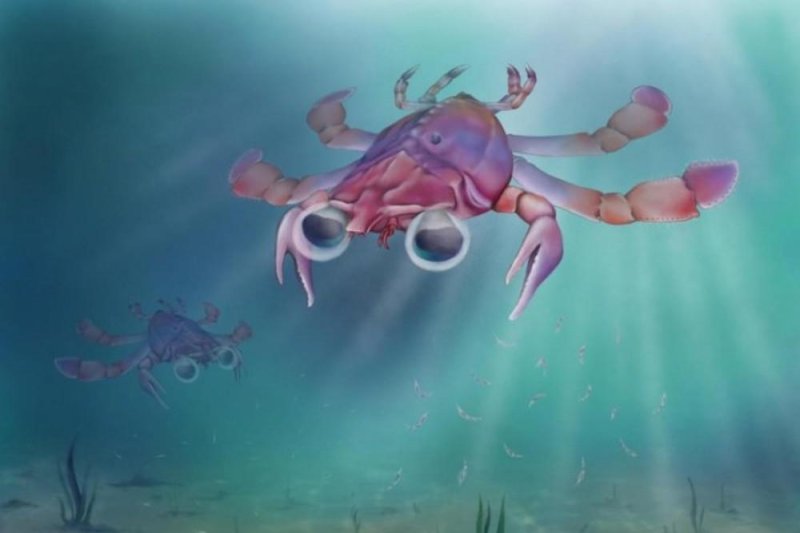An artistic rendering reveals the bizarre features of a new species of crab from the Cretaceous era, Callichimaera perplexa. Photo by Elissa Martin / Yale Peabody Museum of Natural History
April 25 (UPI) -- Researchers have discovered an unusual new crab species, Callichimaera perplexa, in both Columbia and Wyoming.
The dinosaur-era crab, which lived between 90 and 95 million years ago, is unlike a modern crab. According to scientists with the Smithsonian Tropical Research Institute in Panama, the species and its unique morphology revealed an entirely new branch of the tree of life.
"This new discovery is one of the most exciting fossil findings in the tropics in the past decade," Javier Luque, former STRI scientist, now a researcher fellow at Yale University, said in a news release. "We discovered a treasure trove of fossil crabs, dozens of exceptionally preserved specimens with eyes, antennae, muscles and reproductive organs."
Researchers claim the crab species pushes the boundaries of what a crab can look like. The small bodied arthropod boasts large, unprotected compound eyes and shrimp-like mouth parts that look like legs. It's broad, oar-like legs represent the earliest evolutionary adaptation for swimming among crabs.
"This baffling fossil is like the platypus of the crab world," Luque said. "It is the earliest arthropod to evolve swimming oar-like legs since the sea scorpions disappeared more than 250 million years ago, a beautiful and perplexing chimera, as its name indicates."
The unusual species offers insights into how new branches of the animal kingdom emerge.
"It evolved during a period of extensive morphological experimentation in the mid-Cretaceous," researchers wrote in the journal Science Advances.
The fossilized crab specimens, unearthed in the Andes Mountains in Colombia, were extremely well preserved, allowing scientists to make precise 3D models of the arthropods. The Cretaceous-era crabs spent most of their time swimming, not crawling.
The crab species features many of the characteristics of the larval form of modern crabs. The strategy of retaining juvenile characteristics into adulthood is called pedomorphosis -- a sort of shortcut for evolutionary adaptation.
"This discovery, from the mid-Cretaceous, illustrates that there are still surprising discoveries of more recent, weird organisms waiting to be found, especially in the tropics," said Luque. "It makes you wonder: 'What else is out there for us to discover?'"















